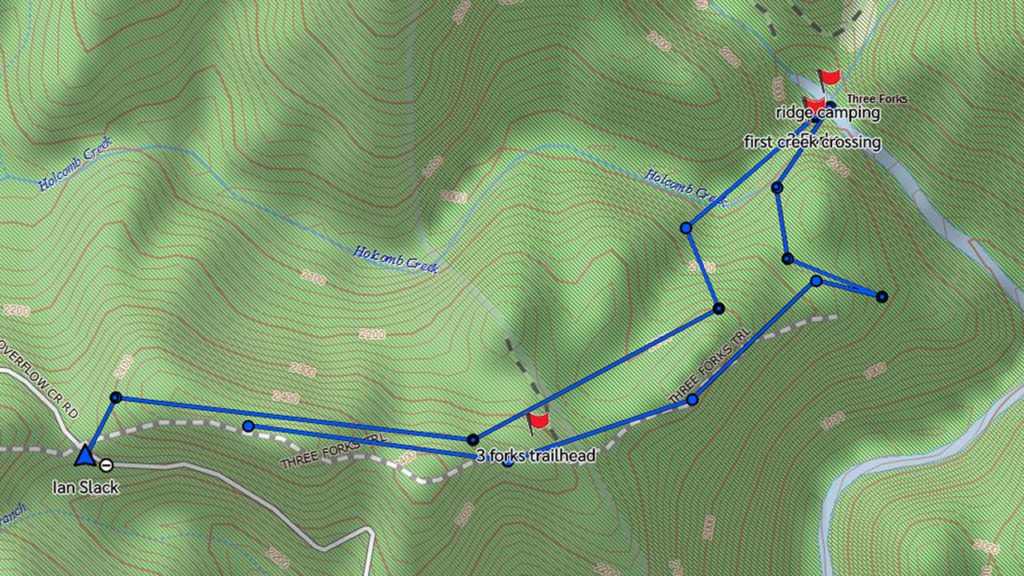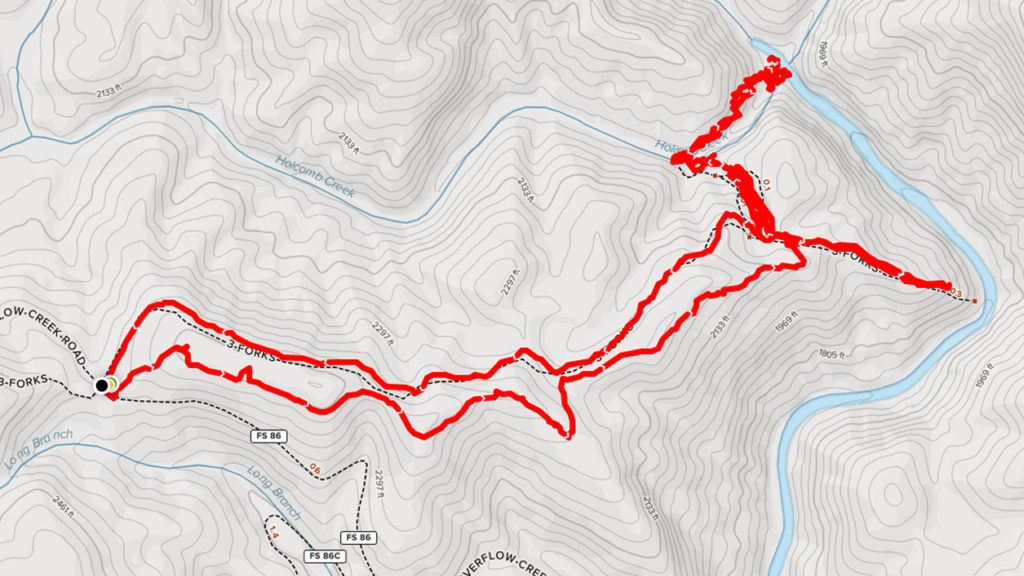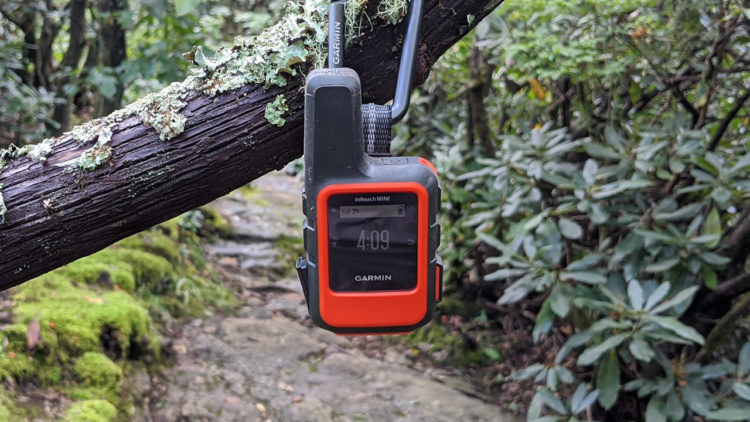Looking for a Garmin inReach Mini review detailing real-world experience? When I began considering the purchase of one, I found many highly-technical assessments and some how-to blogs, but not a lot of information about what it’s like to use one hiking. So, if you want to know how an inReach compares to using a smartphone for tracking and messaging, I hope this blog is useful.
Why buy a 2-way satellite communicator?
Over the past few years, I’ve finally gotten my work/life balance about where I want it and have considerably more weekends free to get out in the woods. Sadly, most of my friends don’t have as much time or enthusiasm as I do, and that means I’m often off the grid and out of cell phone range by myself.
I was backpacking down a completely benign slope recently when my feet went out from under me on a patch of gravel, and I went down hard with one leg twisted at a weird angle. Thankfully, I was completely unhurt, but it made me realize that even if you don’t think you’re taking risks, bad things can happen. That’s when I started seriously considering 2-way satellite communicators and ended up picking the Garmin inReach Mini as it seemed like the best of the bunch despite my negative experience with Garmin cycling products.
The Garmin inReach Mini is not a cell phone
Here’s the main point I want to get across in this Garmin inReach Mini review. It’d be easy to think that buying this device and pairing it with your Android or iPhone will give your smartphone messaging and geolocation superpowers, but it’s not quite that simple. It’s important to understand that using a 2-way satellite communicator and GPS tracking device is a significantly different experience from the text message and navigation applications you’re used to in your smartphone. I’ll explain why in the next couple of sections.
Texting with the Garmin inReach Mini
A 2-way satellite communicator comes into its own when you’re out of cell phone range. Garmin offers the Earthmate companion app with the inReach Mini, and that’s great because you can use your phone’s contact list and keyboard to compose text messages. However, there are some caveats. A normal text message only has to go to the nearest cell phone tower. Satellite messages have to travel thousands of miles each way, so it’s not a speedy process. In my experience, it can take 5 minutes or more to send a message and just as long to get a response. So, forget any ideas of an inReach juicing up your cell phone to enable normal text messaging with friends and family when you’re off the grid. It’s really only practical for sending a message here and there to let people know you’re okay, etc.
Two-way satellite communication is also line-of-sight, meaning it’ll go through glass and clouds, but not anything solid—like tree leaves. This is especially noticeable for me as I do all of my hiking on the East Coast, where the tree cover is usually dense. If you want to use the inReach Mini to text or send an SOS, you may have to get yourself to an area where you have an unobstructed view of the sky. It’s not necessarily a 90-degree angle either, so being down in a gorge could mean you can’t connect, and that may be an issue in an emergency if you’re disabled. If you’re not in an area where the device can reach the satellite, it will keep trying until you move to a location where it can, and then it’s sent.
Tracking with the Garmin inReach Mini
My first experience using the Garmin inReach Mini was on a 12-mile loop trail with reasonably good cell phone network coverage that I’d done many times before. Not only does the Forest Service trail map list it as 12 miles, but I’d also used the AllTrails app to track it before with the same distance result. So, imagine my surprise when I got back to my car to find the Garmin Earthmate app put it at just eight. Here’s why that happened. Smartphone apps track you continuously, but the Garmin inReach Mini checks in with the satellite at intervals you set—ranging from 10 minutes to four hours—and then draws a straight line between those points. What’s the shortest distance between two points? A straight line, and thus inaccurate distance tracking. You can see what I mean in the two pictures below of the same trail. The first one is using Garmin and the second AllTrails.


Alltrails uses all the location tools available in the smartphone, including satellite and pinging cell towers. It gives you much more granular and accurate mileage in my experience. Interestingly, AllTrails has been more accurate for me than inReach even in areas of the Appalachians where the cell coverage is too weak to make phone calls, send texts, or get data. However, you MUST download the AllTrails map for the area in advance, or you won’t be able to see where you are if you have no data connection.
Just as with sending messages, Garmin’s tracking is heavily disrupted by tree cover. You’ll frequently get a message that a waypoint was not sent while hiking in the woods.
So, in my opinion, using Garmin for tracking is a waste of time. Not only is the mileage way off, but Garmin’s subscription plans also make it pricey.
Which Garmin inReach subscription plan should you buy?
After you’ve dropped $350 on a Garmin inReach Mini, you have to purchase a subscription plan to use it. There are three plans: Safety, Recreation, and Expedition. As of this writing, the base plan costs $12 a month plus tax and gives you ten text messages. If you use the tracking feature, you’re billed an additional ten cents per track point. The next plan up has unlimited track points and 40 text messages but costs $25 a month.
I started with the middle plan, but when I realized how poor the navigation/tracking was and how long it takes to send messages, I decided this is mainly a device for emergencies and downgraded to the safety plan.
Overall Garmin inReach Mini user experience
If you’ve used other Garmin equipment like cycling computers and watches, you’ll know what I mean when I say the inReach Mini interface is a little clunky. There’s a lot of clicking around to find settings, and it’s not exceptionally intuitive.
I think the $350 price tag and monthly subscription fees are too high given what you get and the tracking quality. If I had it to do over, I’d take a hard look at the Spot X Bluetooth, which is $100 less (but also larger and heavier).
Even with the Garmin inReach Mini’s many shortcomings, it’s still been a worthwhile purchase for me just as emergency insurance and occasional communicator. It’s come in handy when I was ahead of friends heading to a popular campsite, and I was able to let them know it wasn’t occupied.
My family appreciates getting messages from me, giving my location with a link that shows them exactly where I am on the Garmin Explore website.
If you’re looking to give yourself and your loved ones a little peace of mind, a 2-way satellite communicator like the Garmin inReach Mini will do the job.







